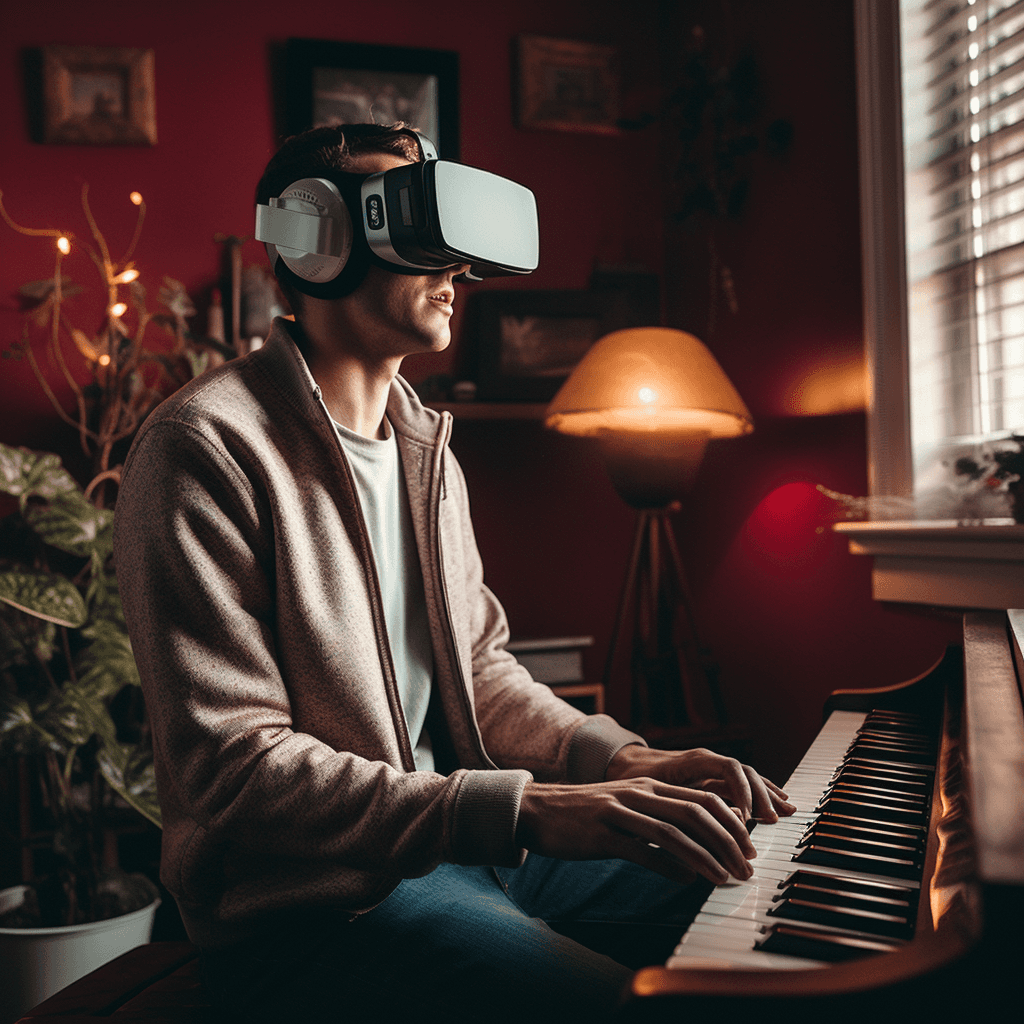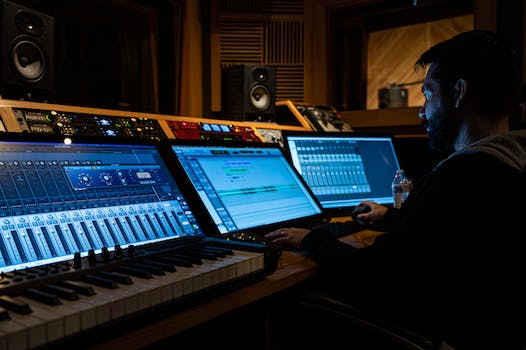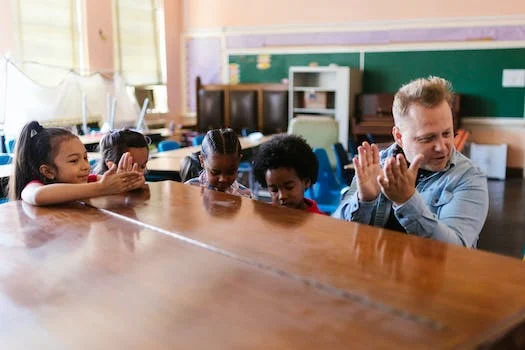The Future of Piano Learning: A Dive into Mixed Reality
Jan 15, 2023

Introduction to the Future of Piano Learning: Embracing Mixed Reality
Welcome to the future of piano learning, where traditional methods merge with technological advancements to create an immersive learning experience. The concept of Mixed Reality (MR) is revolutionizing piano lessons by combining real and virtual worlds. With MR, you can see your hands, the piano keys, and virtual notes floating in the air, all at once. This interactive and engaging approach makes learning the piano more accessible and enjoyable for everyone, regardless of age or skill level. It's time to embrace this exciting innovation and step into the future of piano learning.
Understanding the Concept of Mixed Reality and its Application in Music Education
Mixed reality, often abbreviated as MR, is an innovative technology that merges real and virtual worlds to produce new environments where physical and digital objects co-exist and interact in real time. In the context of music education, specifically piano learning, MR can create an immersive learning experience. It can overlay digital information, like notes or chords, onto an actual piano, helping students to understand and learn more effectively. This interactive method can make piano learning more engaging, fun, and intuitive, as students can see, hear, and even touch the digital elements as if they were real. Overall, mixed reality is revolutionizing piano learning, making it more accessible and enjoyable for everyone.
Traditional Piano Learning Vs. Mixed Reality Piano Learning: A Comparative Analysis
The traditional way of learning piano involves a student, a piano, and an instructor who guides the learning process. This method, although proven effective, can be time-consuming and costly. On the other hand, mixed reality piano learning, a more modern approach, uses virtual or augmented reality to provide interactive piano lessons. This innovative method not only makes learning more fun and engaging but also allows learners to practice at their own pace. It eliminates the need for a physical instructor and piano, making it more accessible and affordable. However, it may lack the personal touch and immediate feedback that a traditional piano teacher can provide. Both methods have their pros and cons, but it's undeniable that mixed reality piano learning is shaping the future of piano education.
The Role of Technology in Transforming Piano Learning Experiences
Technology has significantly revolutionized the way we learn piano, making it more interactive, engaging, and efficient. Features like interactive sheet music, video tutorials, and virtual reality experiences have made learning piano more accessible for everyone, regardless of their location or experience level. With mixed reality, learners can now virtually sit next to professional pianists, watch their precise finger movements, and get real-time feedback on their progress. This integration of technology offers a more immersive learning experience, allowing individuals to learn at their own pace and convenience, thereby transforming traditional piano learning methods.

The Benefits of Mixed Reality in Piano Learning: Enhancing Engagement and Understanding
Mixed reality is revolutionizing piano learning by enhancing engagement and understanding. By merging real and virtual worlds, mixed reality creates a new environment where physical and digital objects co-exist in real-time. This technological breakthrough enables piano learners to interact with the instrument in ways that were previously impossible. It provides a visual representation of notes and chords, helping learners to understand the structure and arrangement of music. The interactive nature of mixed reality also makes learning more enjoyable, keeping learners engaged for longer periods. Therefore, the integration of mixed reality in piano learning is a game-changer, offering an enriching and immersive learning experience.
Case Studies: Successful Implementations of Mixed Reality in Piano Learning
In our exploration of the future of piano learning, it's impossible to overlook the impressive advancements in mixed reality technology. Several case studies have demonstrated the successful implementation of mixed reality in piano learning. For instance, a project named "Music Everywhere" used Microsoft's HoloLens to create an immersive learning experience for piano students. The system guided learners through lessons by projecting holographic notes and instructions onto a real piano. This interactive and engaging method proved to be highly effective, significantly improving the learning curve for beginners. Another successful case is the "Piano Genie" project, which used a virtual reality interface to simplify complex compositions, enabling non-pianists to experience the joy of playing the piano. These instances illustrate the potential of mixed reality as a transformative tool in piano learning.
Challenges and Limitations of Using Mixed Reality in Piano Learning
While mixed reality holds great promise for the future of piano learning, it's not without its challenges and limitations. The most prominent issue is the cost, as mixed reality hardware is expensive, making it inaccessible to many learners. Additionally, technical glitches and the need for frequent updates can disrupt the learning process. The lack of tactile feedback is another drawback. In traditional piano learning, the touch and feel of the keys play a crucial role, which is absent in a mixed reality environment. Lastly, not all aspects of piano playing can be taught through technology. The emotional connection to the music, for instance, is something that is often best conveyed through human interaction.

Conclusion: Embracing the Future of Piano Learning through Mixed Reality with Soundela
In conclusion, the future of piano learning is set to be revolutionized by mixed reality. This technology offers an immersive, interactive learning experience that transcends traditional methods. It allows students to visualize notes, rhythms, and scales in a whole new way, making learning more engaging and enjoyable. Mixed reality also provides instant feedback, enabling learners to correct mistakes in real-time and improve their skills more efficiently. So, let's embrace this exciting technology and experience the future of piano learning through mixed reality.
